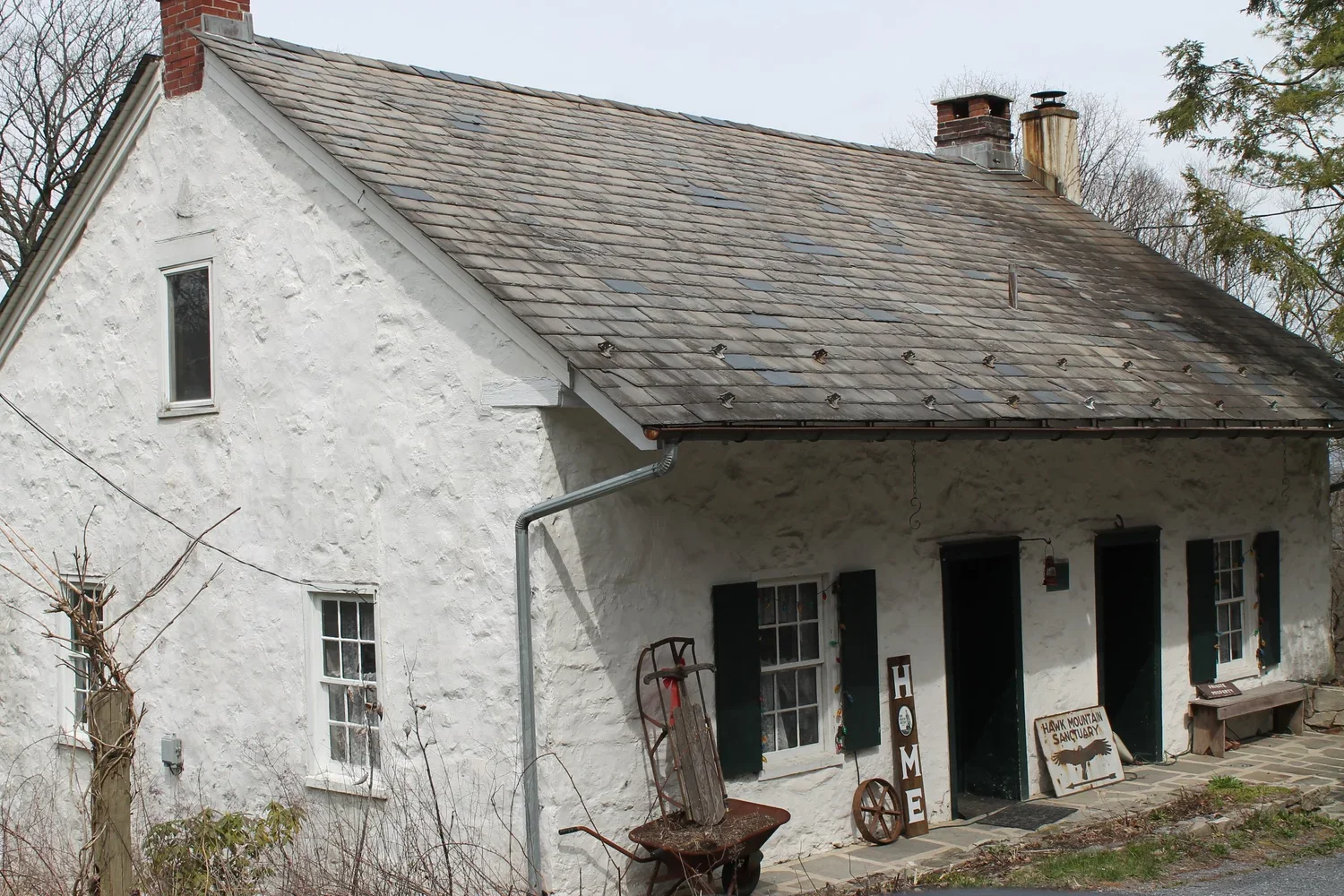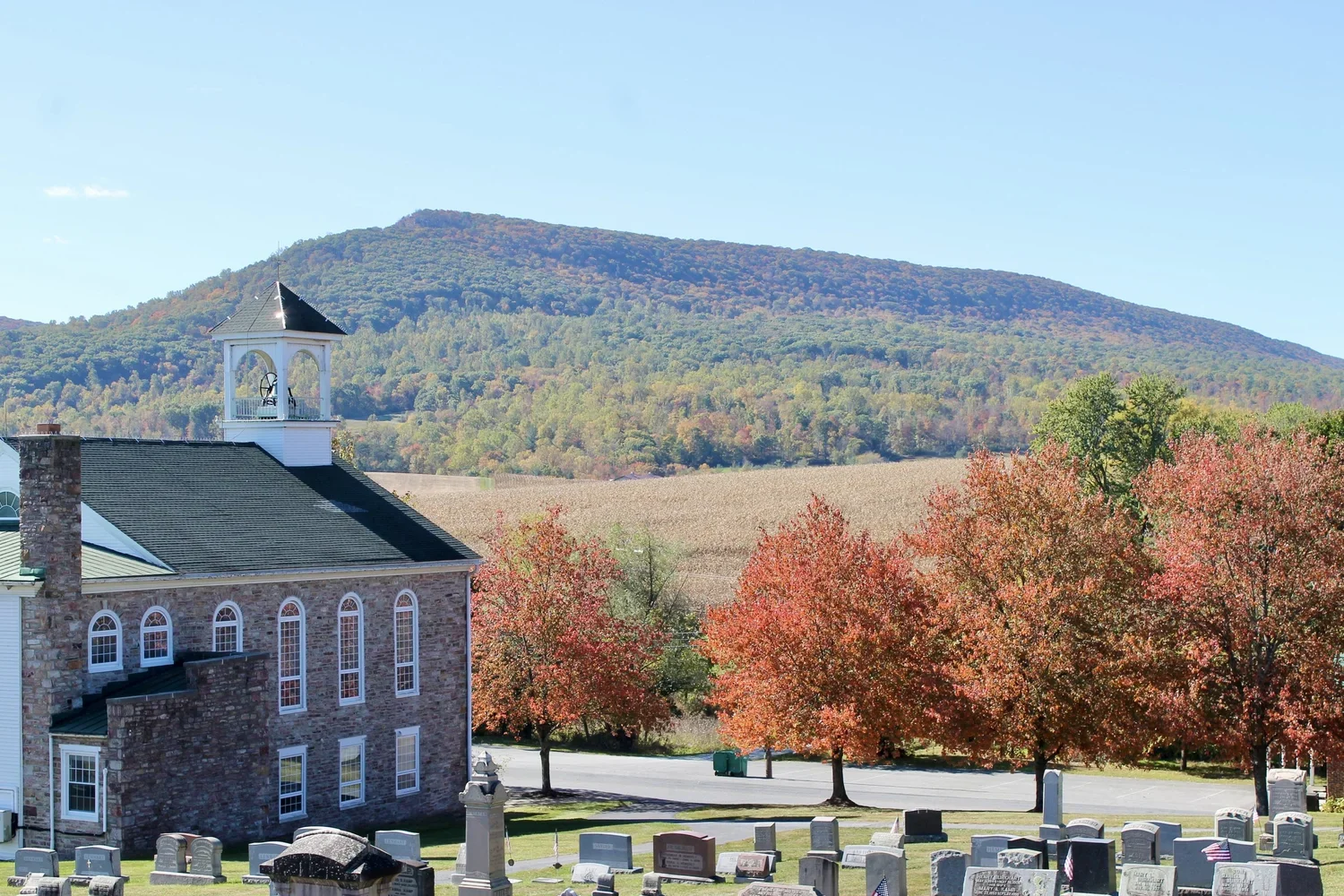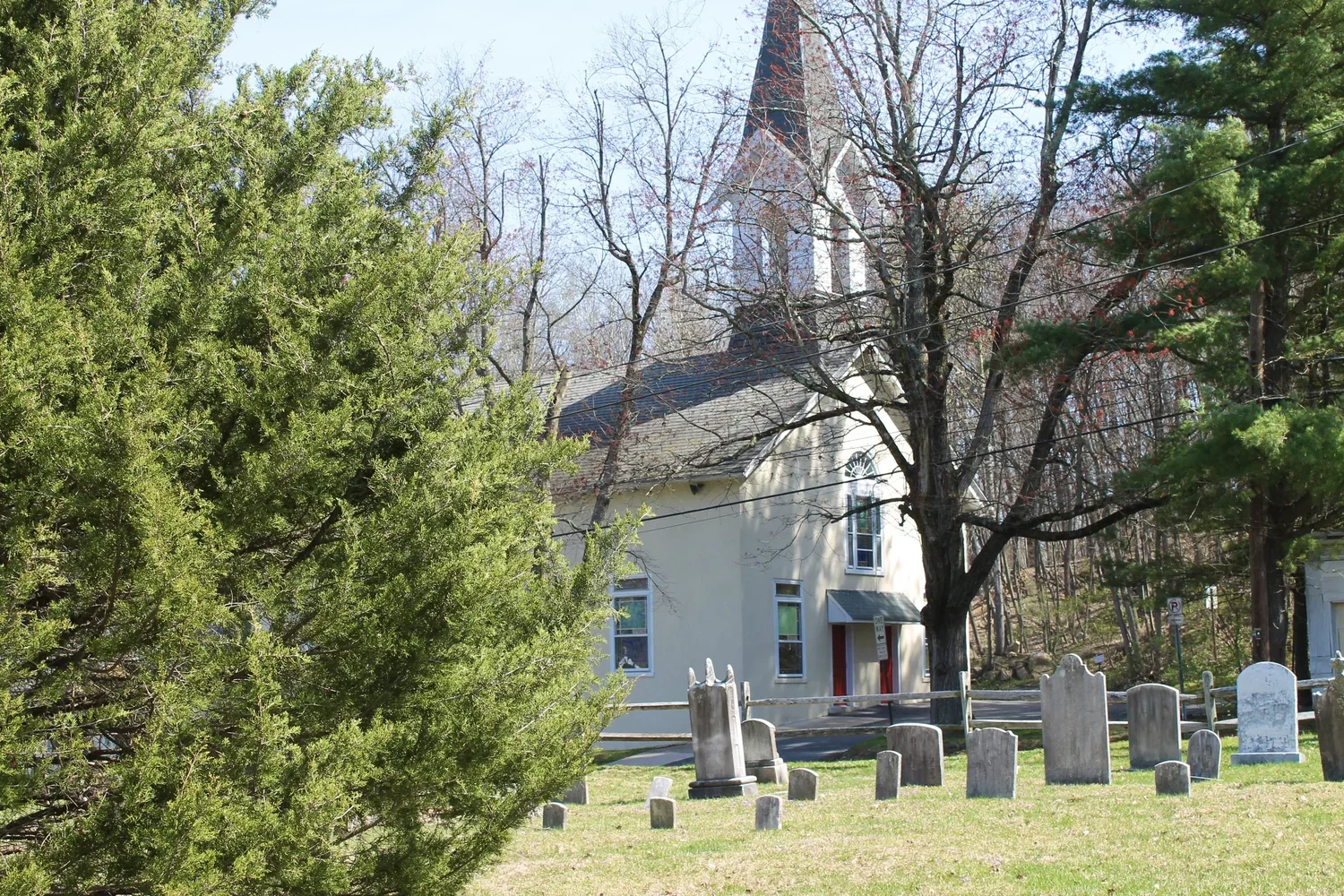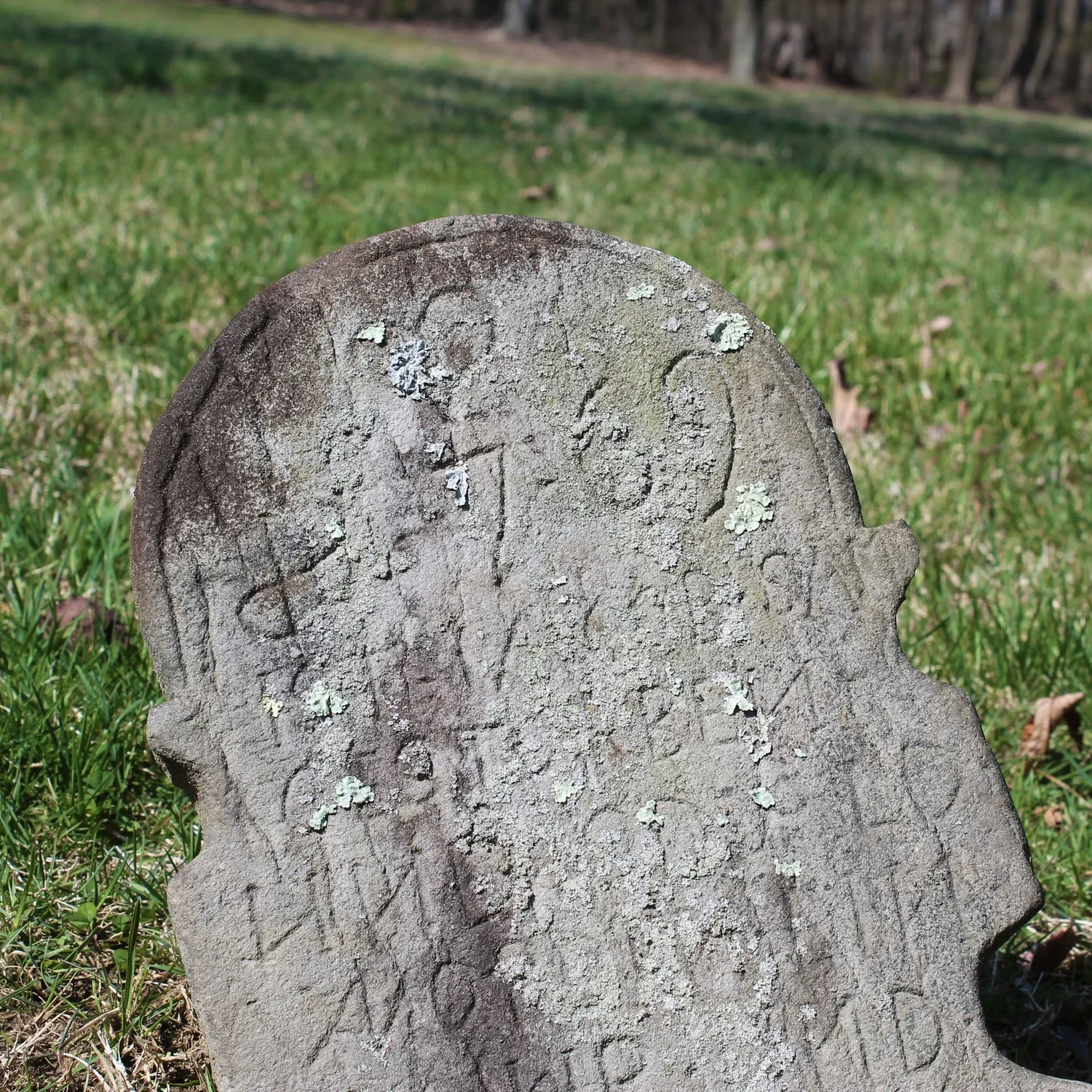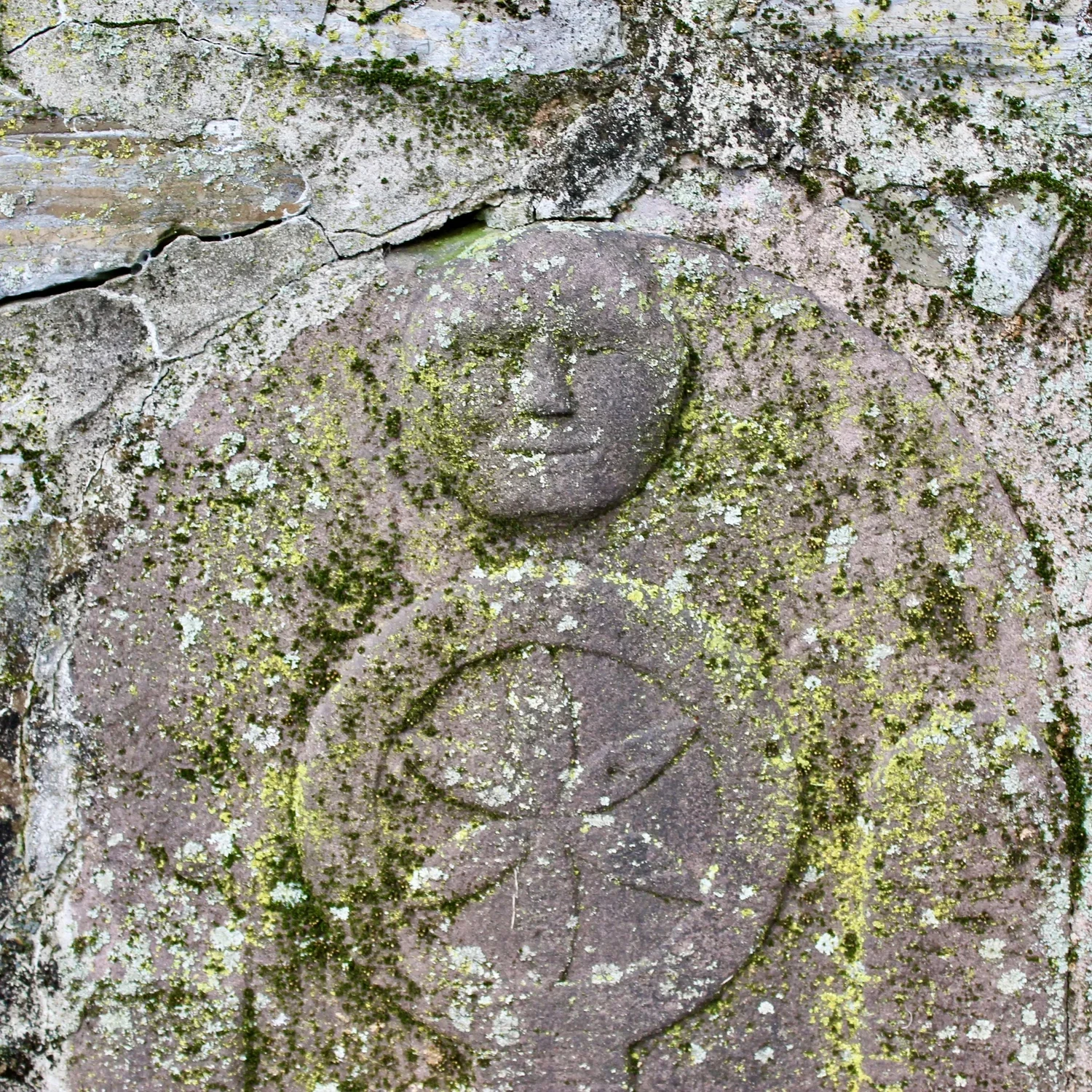Tavern of horrors
Young Jacob Gerhard found a secluded spot halfway up a mountain to build a small log cabin.
Reformationsfest, 31 October 2025
Young Jacob Gerhard found a secluded spot halfway up a mountain to build a small log cabin. The spot was too rocky for farming but was next to a clear running spring and so it was deemed a suitable place for him and his newly married wife. Soon after, they welcomed a daughter to their new home. She was born deaf and mute, as the story goes. And then sadly Jacob and his wife died suddenly in succession. They succumbed to one of the many ailments that meant death in the 18th century. The future of their daughter, too, was lost to time.
Sadness enveloped their once happy little cabin on the rocky edge of the mountain. It remained empty for over 50 years and quietly fell into ruin. Then, in 1850, a German immigrant Matthias Schaumbach and his wife Margarethe moved in, rehabilitated the home, and made it into a tavern for travelers making their way over the mountain.
The tavern today
Soon, though, rumors started spreading among the folks in the valley below. They whispered about travelers who stopped in at the Schaumbach Tavern, never to be seen again. The rumors took on a sinister spin when Matthias was accused of plying travelers with alcohol, providing them with overnight accommodation in the barn across the street, murdering them, and selling their belongings. The folks in the valley claimed that they had seen Matthias with a blood-stained axe. Others claimed that they heard screams from the mountainside and believed that he had killed as many as 20 people.
It wasn’t until Matthias murdered a local powwow doctor that the killing came to an end. An angry mob made its way to the little cabin, threatening to burn it down. A local magistrate urged them away from vigilante justice and the mob dispersed.
Matthias died on March 10, 1879 and allegedly confessed to murdering 11 to 14 people on his deathbed. His will, administered by his widow Margarethe, amounted to just over $90 (that’s about $3000 today). The most expensive thing being two hogs. He was set to rest in the Union Church cemetery down in the valley below.
New Bethel Church and cemetery in the valley below the tavern. The final resting place of Matthias Schaumbach.
Since his death, residents have claimed to see Matthias hovering over his grave at the cemetery. They’ve even alleged that the grave has been struck by lightning time and time again. Passersby see mysterious lights coming from the home and people living in the cabin claim that it’s haunted by Matthias all these years later.
Today the little cabin is owned by the Hawk Mountain Sanctuary. It’s difficult to separate out what’s historical and what’s folklore and likely we never will. The story certainly adds much to this quiet part of northern Berks County.
Tambour Yockel, part 2
Jerusalem Eastern Salisbury’s church records, kept in immaculate German script, suddenly end in 1791.
Florentina, 17 October 2025
[a continuation of last week’s post]
Jerusalem Eastern Salisbury’s church records, kept in immaculate German script, suddenly end in 1791. For more than half a century, the congregation vanished, only to appear once more in 1847, when the cornerstone of their new church was laid on Ascension Day. Where had these people gone in the meanwhile? Why did they let their church building go to ruin and not touch it for 56 years? And why on earth did they choose to rebuild the church away from the original one, on the opposite side of the street distant from the cemetery?
Jerusalem Eastern Salisbury Church today
Shortly after the church was rebuilt, two published accounts of the Tambour Yockel story appeared, though oral tradition of the legend was firmly in place by then. It has also been printed up as a broadside and retold as a ballad in English and German. John Birmelin, perhaps our best Pennsylvania Dutch poet, celebrated the story in his own magical way — lending even more mystery to the death of Drummer Jake on Lehigh Mountain that night. He wrote that the superstitious Pennsylvania Dutch would drive miles out of their way to avoid passing the cemetery at night. So fearful were they to happen upon Wild Bill, the Devil, the Tambour Yockel, and any others who may rest uneasy in the cemetery:
Die alde Leit verzeehle, ass efters in der Nacht
So eener vun de Dode nix Gudes datte schafft.
Es iss der Tambour Yockel, mit seinre Deiwelei;
Do mache Leit en Umweg, geht niemand gaern verbei.
The elders tell the story, that when the sun has set
One of the dead stirs restless, intent on making strife.
It is the Tambour Yockel, with his old evil ways;
Such that they all avoid it, the graveyard and the church.
Drummer Jake challenged the balance of life and death that night — he became a cautionary tale of what happens when one disturbs the dead and challenges the Devil. I wonder if people in that area still tell ghost stories about the haunted cemetery. Maybe, on moonlit nights, when the air is still and the cold, you can still hear the faint sound of a drummer drumming in the distance. You’ll have to let me know what you’ve heard about this story, or perhaps you know of other ghostly hauntings in the Pennsylvania Dutch country. I’d love to hear about them.
Tambour Yockel, part 1
In the years after the Revolutionary War, fear gripped tightly around the small Salzbarrick (Salisbury) area nestled on the slope of Lehigh Mountain.
Gereon, 10 October 2025
[as we approach Halloween, I’m reposting some spooky tales from an earlier version of this blog]
In the years after the Revolutionary War, fear gripped tightly around the small Salzbarrick (Salisbury) area nestled on the slope of Lehigh Mountain. A local farmer nicknamed Wild Bill had just been laid to rest in the cemetery there, but Bill was an awfully cantankerous man — not one to shy away from a fight, and indeed the instigator of many quarrels with his neighbors. Some were glad that Bill was finally in his grave.
A few days after his funeral, the local men gathered — as they usually did — in the tavern to gossip and drink and “talk big.” Naturally, the topic of conversation that day centered on Wild Bill, as they each recounted their own run-ins with the belligerent man. As the night wore on only a few diehards remained at the tavern, drunker than before and still cursing the name and miserable life of their recently departed neighbor. One of them was a former soldier, a drummer in the war, known as Tambour Yockel in Pennsylvania Dutch, “Drummer Jake.”. Yockel had listened silently to the stories about Wild Bill until suddenly he reddened and erupted with anger. He wasn’t afraid of a fight either and had once fought Bill, but was soundly beaten and still bore the scars from that fight. “To hell with Bill!” he exclaimed — “And that’s where he is. Surely, he’s communing with the Devil now!”
The night continued on, but Yockel was still fuming in the corner as he nursed another whisky and traced his old scars with a finger. “I’ll fight him one last time,” he slurred. “I’m going to wake him up from his peaceful slumber and give him the last beating he’ll ever get!” Yockel stormed out of the tavern — a small troupe of drunkards in tow.
The early hours after midnight were quiet, save the loud outbursts from Yockel as he clambered up the mountain toward the cemetery. “Come out, Bill! Show yourself and fight me!,” he yelled as he stumbled around the cemetery toward the freshly dug grave. “Come out and fight, you coward! Send your new friend the Devil, too, and I’ll beat him as well!” His friends held back — curious, but unwilling to trod the cemetery at night, especially now that their friend had summoned Old Scratch himself. Suddenly, they heard a scream. Then there was the sound of thumping, of clothing tearing, of bones breaking, more screams, then the sound of flesh being gouged. Then silence. The onlookers ran.
When finally the sun rose, the curious ventured back to the cemetery. There they found Yockel dead in a pool of blood. His limbs torn from his body, his clothing ripped apart and smelling of brimstone. Surrounding the body were deep impressions of cloven hoofprints in the damp soil.
Gravestone in the Jerusalem Eastern Salisbury Church cemetery
That all is to have happened at the Morgenland Kirche (today known as the Jerusalem Eastern Salisbury Church), which was founded in 1759. It was always a smaller congregation and was at first just a simple log church. But the congregation is a mystery — and that is what gives life to the circumstances surrounding the death of Drummer Jake.
The wall at God’s acre
On a bitterly cold day in February 1784, General Peter Muhlenberg, enroute to Ohio, stayed at the Kucher homestead near present-day Lebanon, Pennsylvania.
St. James, 25 July 2011
On a bitterly cold day in February 1784, General Peter Muhlenberg, enroute to Ohio, stayed at the Kucher homestead near present-day Lebanon, Pennsylvania. The home was built two decades earlier by the then-occupant’s parents, Johann Peter and Anna Barbara Kucher.
Like many 18th century immigrants, Peter and Barbara were sadly familiar with child mortality. They lost two sons in a single year and buried them on their property in Hebron — which today borders Lebanon proper. They wanted perpetual care of their children’s graves and, although they were Lutheran, saw a growing local Moravian congregation in need of permanent sanctuary. So they gave them the land to build a church and establish a cemetery around the graves of the children. The original church is long gone, but the congregation and God’s Acre, as they call it, remain.
Hebron God’s acre
The old Kucher homestead is also gone, but not completely. Visit the Hebron Moravian Cemetery and take notice of the wall there. The stones are from the Kucher homestead and if you look back and to the left as you enter the gate, you’ll see two sandstones set inside the wall. At first glance, they look like gravestones but are in fact the hand carved date stones originally placed in the Kucher home’s gable ends during construction.
Kucher homestead date stones
When I was last there, the stones were covered in moss and lichens, but they’ve since been cleaned — one with a heart and the date 1761 followed by the names of the builders; the other with a round (moon?) face and six-pointed star.
Kucher homestead date stone


